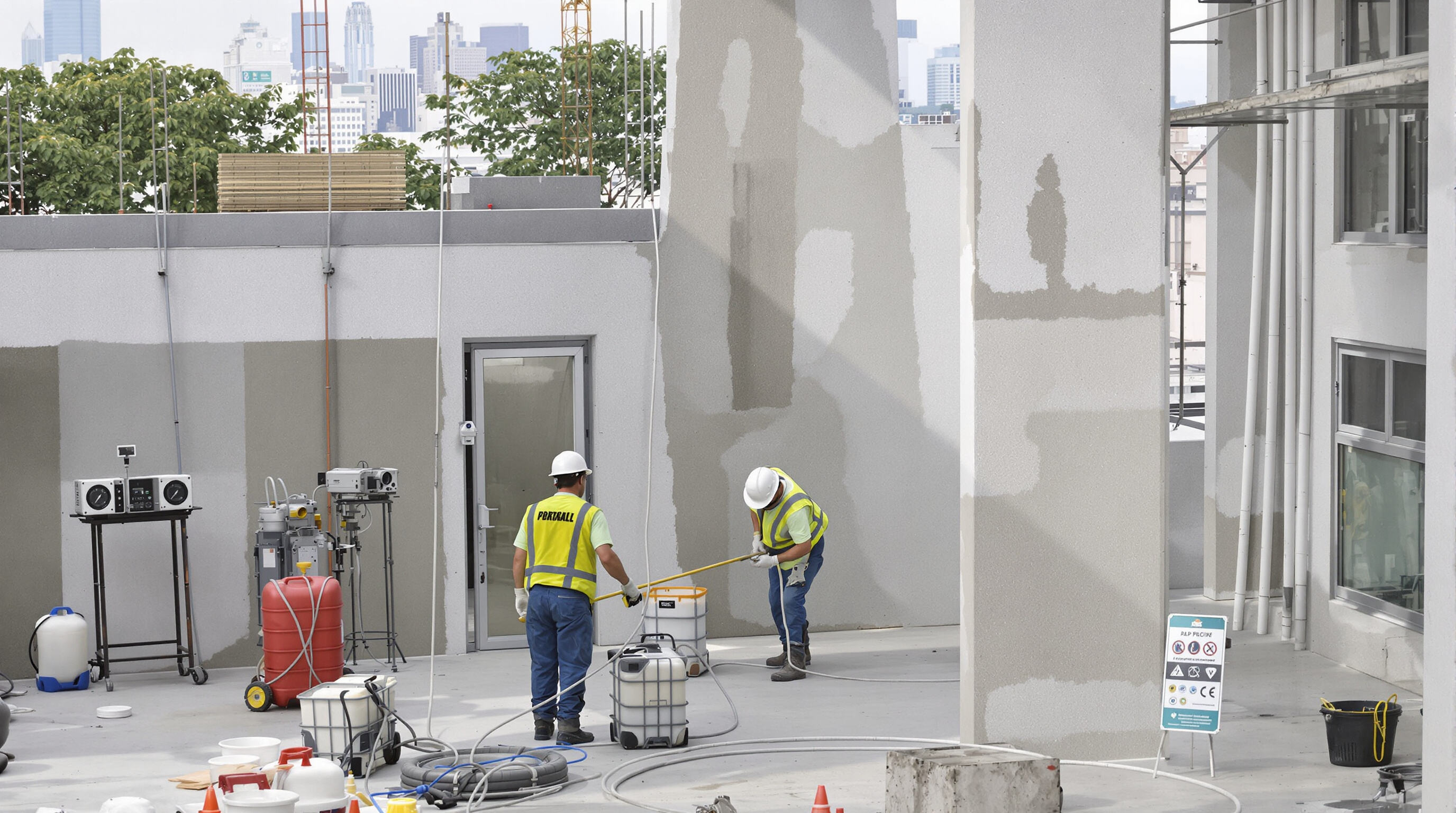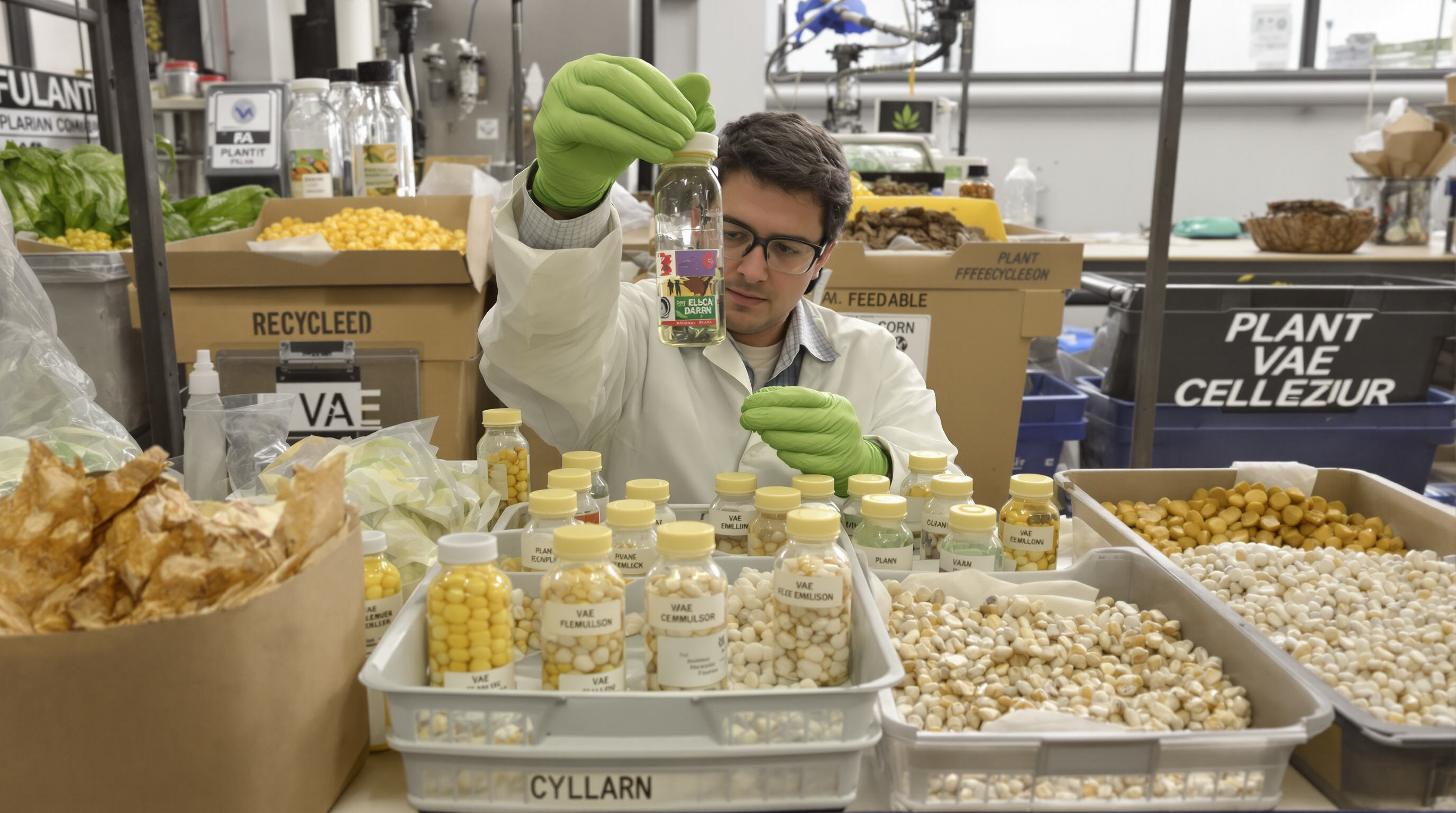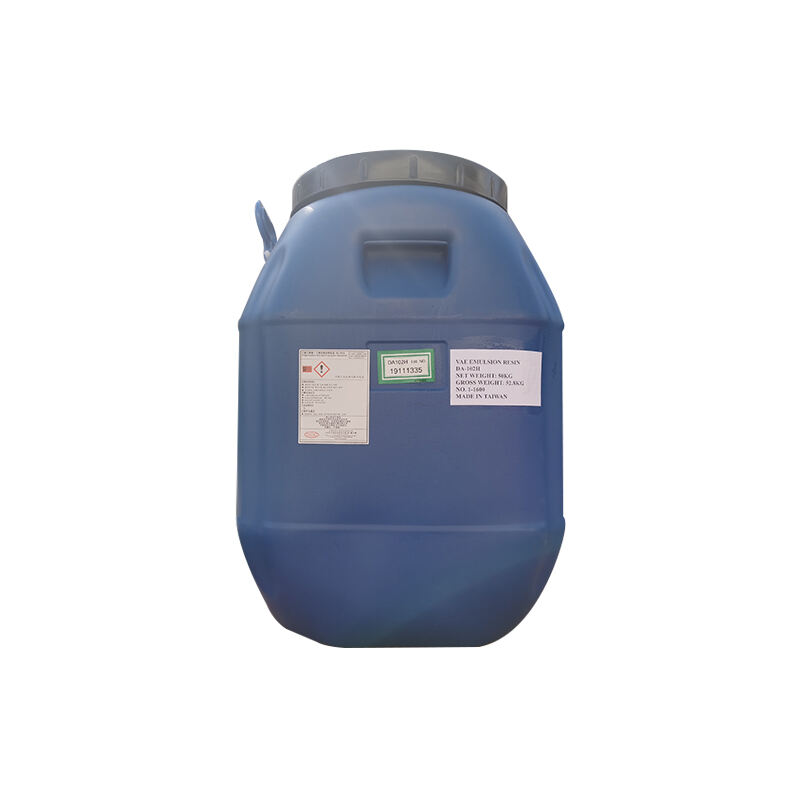Understanding VAE Emulsion and Its Role in Sustainable Construction
The construction industry worldwide is shifting focus to greener materials, making VAE emulsion a key player in sustainable building methods these days. According to some recent research, around two thirds of manufacturers have started favoring water based options including VAE copolymer emulsions. This trend makes sense when looking at today's strict environmental rules and certification programs like LEED. The Sustainable Building Council reported this shift back in 2023, showing how companies are adapting their practices to stay compliant while reducing their environmental impact.
What is VAE Copolymer Emulsion and Its Core Properties?
VAE, which stands for vinyl acetate ethylene copolymer emulsion, is basically a water based adhesive polymer known for sticking really well, being flexible enough to handle movement, and standing up against moisture pretty well. What makes it work so good is how it mixes together those vinyl acetate and ethylene building blocks at the molecular level. This creates a binding agent that actually makes construction stuff last longer without hurting the environment too much. Let's talk about what makes VAE stand out from regular glues. First off, it doesn't smell bad like some other products do. Second, it works great with recycled materials that many builders want to use these days. And third, there's absolutely no formaldehyde coming off of it. That last part is a big deal when compared to old school solvent based adhesives that can release harmful chemicals into the air.
The Shift from Solvent-Based to Water-Based Formulations in Green Building
The construction sector has cut back on solvent based adhesives by around 40 percent since 2020 according to data from the Global Green Chemistry Initiative last year. This shift comes as both regulations tighten up and people start caring more about what goes into their buildings. Water based VAE emulsions are becoming popular alternatives because they get rid of those nasty VOCs that pollute indoor air. These new products help tackle indoor air quality issues while still getting the job done properly. Most green building certifications across the globe now look for materials that can prove they're sustainable throughout their entire life cycle from production all the way to disposal.
How Low-VOC VAE Emulsions Support Eco-Conscious Production
Low-VOC VAE emulsions reduce occupational health risks and enable compliance with circular economy principles. Their water solubility allows easier recycling of construction waste, diverting over 30% of adhesive-related debris from landfills (Eco-Construction Journal 2023). These emulsions also support energy-efficient production processes, cutting CO∞ emissions by up to 25% compared to solvent-based alternatives.
Environmental Benefits and Regulatory Alignment of VAE Emulsions

Reducing Environmental Impact Through Water-Based Chemistry
VAE emulsions swap out those old solvent based formulas for something much better water borne chemistry. The result? Upwards of about 90 percent fewer VOC emissions when applying these products. Groundwater stays cleaner since we're not dealing with all those traditional solvents anymore. Plus, air quality gets a boost too, which matters a lot in city construction areas where workers are breathing in everything around them. Cleanup becomes so much easier with water based systems. We're talking roughly 60 to maybe even 70 percent less hazardous waste generated compared to what happens with solvent dependent alternatives. Makes sense why more companies are making this switch.
Compliance with Green Building Standards and Environmental Regulations
Emulsions today are hitting those tough VOC standards set by big names like LEED v4.1 and BREEAM, where they limit what sticks to walls inside buildings to no more than 50 grams per liter. Companies making products with VAE formulas find themselves checking boxes on EPA safety lists much quicker than before because their stuff already comes with green stamps of approval from environmental profiles. As countries around the world start taking circular economy seriously, there's growing interest in materials that pass those Cradle-to-Cradle tests. Builders and designers want stuff that works well now but won't end up in landfills later, so these certified products are becoming must-haves for anyone looking ahead.
Lifecycle Analysis: Lower Carbon Footprint of VAE-Based Construction Products
Third-party lifecycle assessments show VAE-modified concrete adhesives reduce embodied carbon by 32% versus epoxy alternatives. The lower curing temperatures (40−50°C vs. 80−120°C for solvent-based) cut energy use in prefab manufacturing by 18−22%. End-of-life simulations demonstrate 94% non-toxicity in landfill scenarios, exceeding OECD chemical persistence thresholds.
Global Green Building Certifications (LEED, BREEAM) Influencing Material Selection
Projects targeting WELL Building Standard™ prioritize VAE-based sealants for their <0.5 ppm formaldehyde emissions—87% below conventional acrylics. In 2023, 68% of BREEAM Outstanding-rated buildings in Europe specified VAE adhesives for moisture-resistant assemblies. These certifications now influence 92% of architectural specifications in markets with carbon neutrality mandates.
Key Applications of VAE Emulsions in Sustainable Construction Materials
VAE Emulsions in Flooring and Tile Adhesives: Performance and Sustainability
VAE emulsions are changing how we think about flooring systems because they offer strong, low VOC adhesives that stick to ceramic tiles, vinyl planks, and even epoxy coatings without messing up indoor air quality. According to industry reports, these products boost shear strength around 35 percent better than traditional solvent based alternatives, plus they check off all the boxes for LEED v4.1 requirements. What makes them stand out? The water based formula means no nasty fumes when installing, which matters a lot in places like schools and hospitals where clean air isn't just nice to have but absolutely essential for everyone's health.
Flexible Bonding and Moisture Resistance in Construction Sealants
VAE emulsions in sealant formulas create joints that stand up to weather changes and thermal expansion problems in building exteriors as well as areas where roofs meet walls. Research from last year showed something pretty impressive actually: these modified sealants kept about 90% of their stretchiness even after going through 5,000 rounds of humidity testing. That beats out those expensive silicone hybrid options when budgets are tight for renovation projects. Because they hold up so well over time, these materials work great in places prone to moisture issues like basements needing waterproofing or bathrooms where preventing mold growth matters a lot according to modern green construction standards.
Low-Odor, Non-Toxic Coatings for Improved Indoor Air Quality
Architects specify VAE-based paints and primers to meet WELL Building Standard™ requirements for <1 g/L VOC content. Unlike conventional acrylics, these coatings emit no detectable odors post-application, reducing ventilation needs by 40% (World Green Building Council, 2019). Hospitals using VAE wall coatings report 28% fewer occupant complaints related to chemical sensitivity.
Case Study: Retrofitting Historic Buildings Using Low-VOC VAE Adhesives
When renovating an old 19th century courthouse building, the contractors decided to swap out those harmful urea formaldehyde glues for something better called VAE adhesive so they could keep the original wooden floors intact. The whole project cut down on volatile organic compounds by half compared to regular renovation work, which wasn't bad at all. Plus, they managed to get around seven hundred forty thousand dollars back from the government via some historic preservation tax credits. After everything was done, they ran some tests inside the building and found that dust particles were actually 63 percent under what the Environmental Protection Agency considers safe limits. This shows just how well VAE products can work when trying to protect historical structures while still meeting today's green standards.
Innovations in Bio-Based VAE Emulsions and Circular Economy Integration

Bio-Based VAE Copolymers from Renewable Feedstocks: Current Innovations
The plastics industry is seeing some interesting developments as manufacturers experiment with bio-based VAE copolymers made from plant sources like corn starch and cellulose instead of relying on traditional petroleum products. Recent market research indicates that around 35% of companies have started integrating at least 20% renewable materials into what they produce. This shift helps cut down on our reliance on fossil fuels without sacrificing important qualities that make these materials useful in real world applications. Products still stick properly to surfaces and resist water damage just as effectively as before, which matters a lot for things like coatings and sealants used across various industries.
Eco-Friendly Formulations Using Recycled and Plant-Based Raw Materials
Advanced recycling processes allow the integration of post-consumer plastic waste and agricultural byproducts into VAE emulsions. Closed-loop production systems recycle 60−70% of process water, and bio-based plasticizers are replacing traditional phthalates. This supports circular economy objectives by extending material lifecycles and reducing industrial waste.
Scalability Challenges of Bio-Based VAE vs. Performance Expectations
Despite promise, scaling bio-based VAE production faces obstacles:
- Higher costs (up to 30% more than conventional VAE)
- Limited availability of certified renewable feedstocks
- Slight performance trade-offs in extreme temperature resistance
Ongoing R&D focuses on hybrid formulations that blend bio-based and synthetic components to balance cost, durability, and sustainability.
Future Outlook: Aligning VAE Development with Circular Economy Principles
The industry is adopting circular economy frameworks outlined in the 2024 Circular Economy Report, identifying three priority areas for VAE emulsions:
- Designing for disassembly in adhesives to enable material recovery
- Industrial symbiosis networks sharing byproducts between factories
- Waste-to-resource models converting emulsion production waste into insulation materials
These strategies could reduce VOC emissions by 45% in construction applications by 2030 while supporting next-generation green building standards like LEED v5.
FAQ
What is VAE emulsion?
VAE, or vinyl acetate ethylene copolymer emulsion, is a water-based adhesive polymer used in construction for its strong bonding, flexibility, and moisture resistance, without releasing harmful formaldehyde.
Why is there a shift from solvent-based to water-based formulations?
The shift is due to tighter regulations and increased environmental awareness. Water-based formulations like VAE emulsions reduce VOC emissions, which improves indoor air quality and complies with green building certifications.
How do VAE emulsions benefit the environment?
VAE emulsions reduce VOC emissions by up to 90%, decrease hazardous waste, and improve air and water quality in construction environments. They also facilitate easier recycling, reducing landfill waste.
Are there any challenges associated with bio-based VAE emulsions?
Yes, challenges include higher production costs, limited availability of renewable feedstocks, and slight performance limitations at extreme temperatures. However, ongoing R&D aims to overcome these hurdles.

